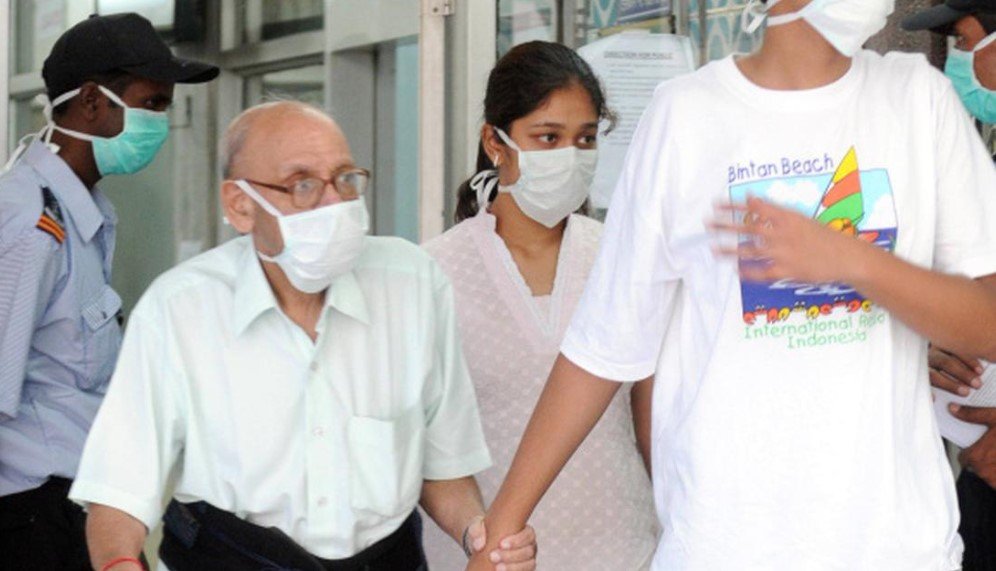Delhi’s Worst Swine Flu Outbreak in a Decade Leaves Thousands Struggling
The national capital is grappling with a relentless swine flu outbreak, with doctors warning that symptoms resembling severe COVID-19 cases shouldn’t be ignored. Over half of Delhi-NCR households report at least one member sick with flu-like symptoms.
Doctors Sound the Alarm
Medical experts across Delhi’s leading hospitals are raising red flags. The combination of influenza A (H1N1), influenza B, and other respiratory viruses like H3N2 and RSV has led to a surge in prolonged illnesses. Dr. Rommel Tickoo from Max Super Speciality Hospital stated, “It’s a nasty mix — I’m seeing patients with high fevers, persistent coughs, and fatigue that lasts beyond 10 days. Many are requiring nebulizers and inhalers, and in severe cases, steroids.”
The overlap of symptoms with COVID-19 — fever, cough, body aches, and respiratory discomfort — has only fueled public anxiety. However, doctors stress that these are flu strains, not a new coronavirus wave.
Why Is This Outbreak Hitting So Hard?
Several factors are driving this surge:
- Weather Patterns: Cooler temperatures have provided the perfect breeding ground for flu viruses.
- Post-COVID Immunity Drop: Reduced exposure to common illnesses during the pandemic may have weakened herd immunity.
- Social Interactions: With life returning to normal, increased travel and social events have accelerated virus spread.
“People’s immune systems have taken a hit after years of isolation and masks. It’s like we let our guard down, and the viruses came charging back,” one Delhi-based virologist explained.

Who’s Getting Hit the Hardest?
The outbreak isn’t sparing anyone. Children, adults, and seniors alike are falling sick. Doctors are reporting packed outpatient departments (OPDs), with some patients experiencing respiratory distress serious enough to require hospital admission.
One striking pattern is the prolonged recovery time. Typically, flu symptoms ease in five to seven days, but this season, many patients are still coughing and fatigued two weeks later.
Health authorities say those with chronic conditions like asthma, diabetes, or heart disease, along with seniors and young children, remain at higher risk for complications like pneumonia.
Swine Flu and Influenza B: What to Watch For
Swine flu (H1N1) first made global headlines during the 2009 pandemic. While it’s now part of the seasonal flu lineup, it remains highly contagious. Symptoms often include:
- High fever
- Persistent cough
- Sore throat
- Muscle and body aches
- Chills and fatigue
Influenza B, though less severe in most cases, still packs a punch. It’s particularly rough on children and the elderly, causing respiratory distress, fever, and exhaustion.
A Growing Dependence on Medical Support
Doctors report an uptick in patients needing respiratory support at home. Many are relying on nebulizers, inhalers, and, in tougher cases, oral steroids for symptom relief. The pattern eerily mirrors the post-COVID recovery experience, where respiratory symptoms lingered for weeks.
Hospitals say they’re managing, but with the outbreak showing no signs of slowing, pressure is building on the healthcare system.
What’s Next for Delhi?
Health officials are closely monitoring the situation. While vaccines for flu strains, including H1N1, are available, uptake remains low. Experts are urging people to vaccinate, especially those in vulnerable groups.
In the meantime, doctors advise sticking to basic preventive measures: wearing masks in crowded areas, practicing good hand hygiene, and staying home when sick.
As one physician put it, “It feels like Delhi is stuck in a bad rerun of the pandemic. But this time, it’s the flu that won’t let go.”
